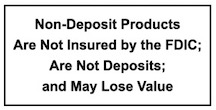Identity Theft: Internet Schemes & Scams
Online fraud continues to grow. As an internet user, you need to be aware of and alert to such fraud and scams.
Phishing – fraudulent e-mails, appearing to be from a trusted source directing you to other websites. Once there, you are asked to verify personal information such as name, account and credit card numbers and passwords. These sites are often designed to look exactly like the site they are imitating.
Spoofing – Web spoofing allows an attacker to create a “shadow copy” of any legitimate website. This process allows the attacker to monitor all of your activities, including any passwords or account numbers you enter.
- If you get an email warning you, with little or no notice, that your account will be shut down unless you reconfirm certain information, DO NOT click on the email link. Instead, use a phone number or enter the web address yourself. Clicking on a link that looks legitimate may in fact direct you to a fraudulent website where crooks will steal your personal information. Remember, your bank or a government agency will NEVER send you an alert asking you to disclose your personal information.
- Before submitting any financial information to a legitimate website, look for the “lock” icon on the browser status bar, or look for “https” in the web address. Both are indications that the information is secure and encrypted during transmission.
7 Tips for Protecting Yourself Online
1. Keep your computer and mobile devices up to date. Having the latest security software, web browser, and operating system are the best defenses against online threats. Turn on automatic updates so you receive the newest fixes as they become available.
2. Set strong passwords. A strong password is at least eight characters in length and includes a mix of upper and lowercase letters, numbers and special characters.
3. Watch out for phishing scams. Phishing scams use fraudulent emails and websites to trick users into disclosing private account or login information. Do not click on links or open attachments or pop-up screens from unfamiliar sources.
4. Keep personal information personal. Lock down your privacy settings on your social media profile and avoid posting things like birthdays, addresses, mother’s maiden name, etc.
5. Secure your internet connection. Always protect your home wireless network with a password and be cautious about what information you send over public WiFi networks.
6. Shop safely. Before shopping online, make sure the website uses secure technology. Look for a tiny padlock symbol in the address bar and make sure the web address begins with https.
7. Read the site’s privacy policies. Though long and complex, policies tell you how the site protects the personal information it collects. If you don’t see or understand a site’s privacy policy, consider doing business elsewhere.
Identity Theft
Identity theft is one of today’s fastest growing crimes, occurring when someone steals your personal information and identification. They may open credit card accounts, apply for loans, rent apartments and purchase phone services—all in your name. Identity thieves typically spend your money as quickly as possible, and, in many cases, request a change of address so you do not receive bills for their activity. Most victims don’t know their personal information has been compromised until they apply for a loan or receive a call from a collection agency. Clearing your name and erasing the effects of identity theft can be a lengthy and difficult process; it can take months or even years to re-establish creditworthiness.
To avoid becoming a victim of identity theft, practice these helpful tips:
• Store personal information in a safe place. Shred financial statements, checks, credit card offers, charge receipts and credit applications before discarding them.
• Don’t release personal information. Never disclose account numbers, social security numbers or credit card numbers over the phone or email unless you know the person or organization you’re dealing with.
• Guard against mail theft. Deposit outgoing mail into a secure, official U.S. Postal Service collection box. Promptly remove incoming mail after it has been delivered.
• Monitor account information and billing statements. Know your billing cycles and review monthly statements for authorized charges or withdrawals. Missing statements could indicate someone has filed a change of address notice to divert your mail to his or her address. For added security, consider switching to electronic statements delivered directly to a private email address only you have access to.
• Obtain and review your credit report annually to ensure the information is accurate. The three major credit bureaus are:
Equifax Experian TransUnion
800.685.1111 888.397.3742 800.888.4213
What to do if you become a victim of identity theft:
• File a police report and call the Federal Trade Commission’s toll-free Identity Theft Hotline at 877.438.4338.
• Notify the three credit bureaus’ fraud departments. Request a “fraud alert” be placed in your file, as well as a victim’s statement asking creditors to call you before opening any new accounts.
• Request a copy of your credit report. Credit reports are free to fraud victims.
• Contact your creditors for any fraudulently opened accounts. Close compromised accounts and obtain new credit, debit and ATM cards.
• Report suspected stolen mail to your local postal inspector and check the post office for unauthorized change of address requests.
Consumer Resources
The internet is a great tool for information, and to conduct on-line business, as long as consumers take appropriate precautions and are aware of the possibility that someone may be trying to scam them. If it seems too good to be true, it probably is.
Federal Trade Commission (FTC) Consumer Response Center
You can file a complaint with the FTC against a company or organization that you believe has cheated you by contacting the Consumer Response Center by phone: toll free 877-FTC-HELP (382-4357) – TTY:202-326-2502.
ID Theft Resource Center
Phone 858-693-7935


